Lag and latency in Android Auto can stem from various factors: weak or unstable internet connection, outdated software, corrupt app cache or data, outdated apps, or a worn-out cable. There could be several reasons you may face issues, such as delayed response time for voice or touch input, navigation inaccuracy, or audio playback latency. Try the following troubleshooting methods to solve the latency and lag issues in Android Auto.
Don’t Miss: 15 Tips to Fix If Apps Keep Closing on Android
1. Tweak Wi-Fi Settings on your Phone
Changing your phone’s Wi-Fi settings may resolve the latency and lag when using Wireless Android Auto and listening to music. In most cases, users face lag and latency in Android Auto when Wi-Fi power-saving mode is enabled. Follow the steps below to change it back to normal.
- Navigate to Settings > Connections > Wi-Fi.
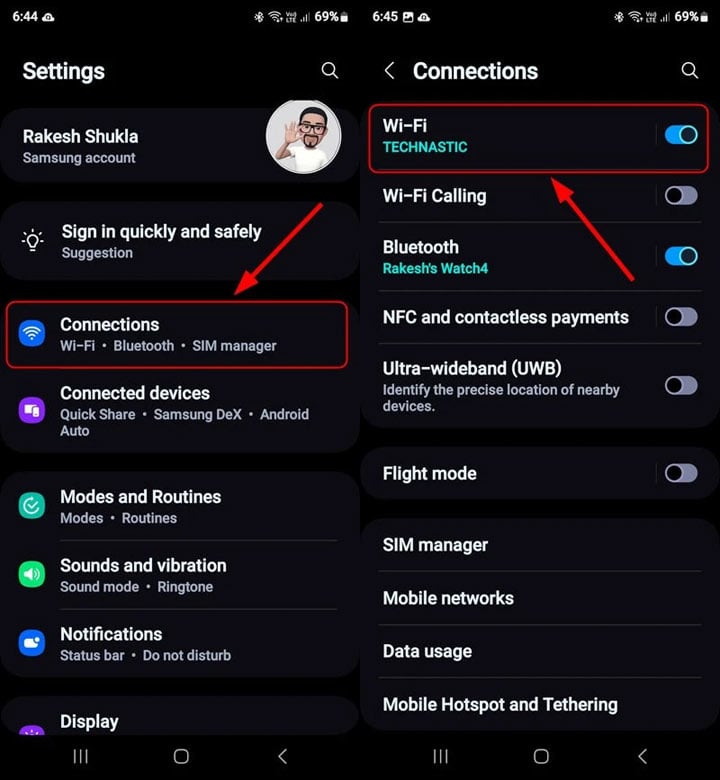
- Tap the 3-dot icon in the top-right corner and select the Intelligent Wi-Fi option.
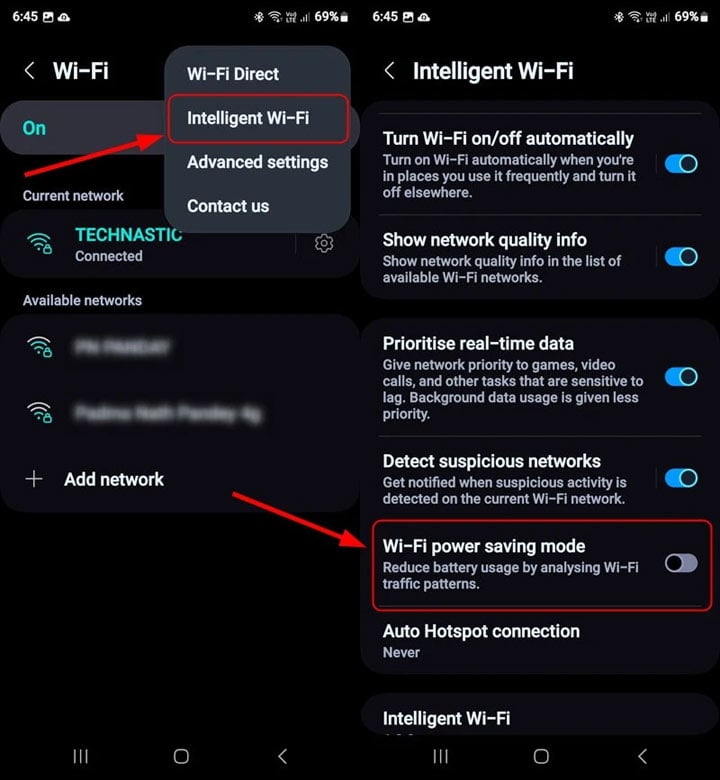
- Now tap the toggle next to Wi-Fi power saving mode to turn it off. If you don’t find the option, search for “Wi-Fi power saving” in phone settings.
This should fix the lag and latency issue in Android Auto. If that doesn’t help, do the following.
- Go to Settings > Developer Options on your phone.
- Scroll down to the Networking section.
- Look for an option named Wi-Fi scan throttling and disable it.
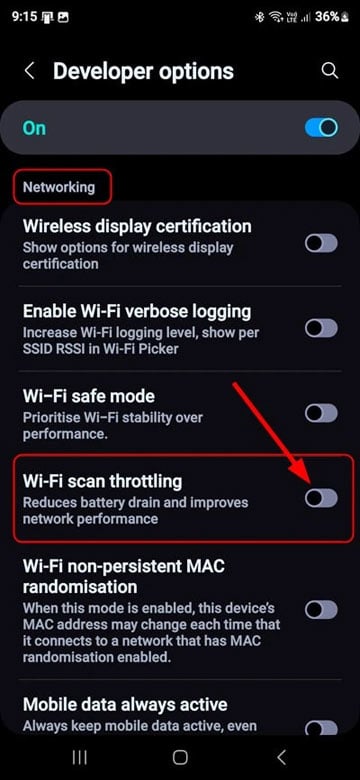
2. Turn off Power Saving Mode
While the power-saving mode saves battery, it disables features, such as background location checking, data syncing, 5G connection, etc. Moreover, it decreases CPU speed by 70%. Disabling all these features may impact the performance of Android Auto, Google Maps, and music streaming services. Therefore, it’s a good idea to customize the power-saving mode before enabling it.
- Navigate to and open Settings > Battery > Power saving.
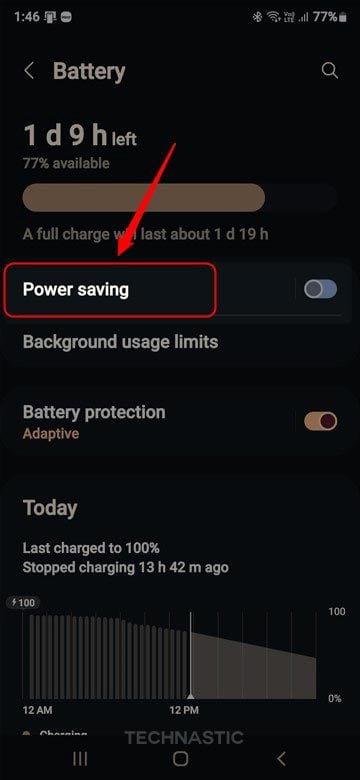
- Tap the toggle next to the Power Saving option to turn it off.
Similarly, you should also disable the Light Performance Profile and switch to Standard mode. You can do that by navigating to Settings > Device Care > Performance Profile on Samsung Galaxy devices.
3. Clear App Cache and Data
Corrupted cache files may cause delays while playing music and using maps. Clearing the app cache and data for Android Auto, Google Maps, and music apps can significantly improve performance.
Here is how to wipe app cache and data on Android devices.
- Navigate to Settings > Apps.
- Look for Android Auto in the list of installed apps and tap it.
- Select Storage and tap the Clear Cache option. If the problem persists, clear data as well.
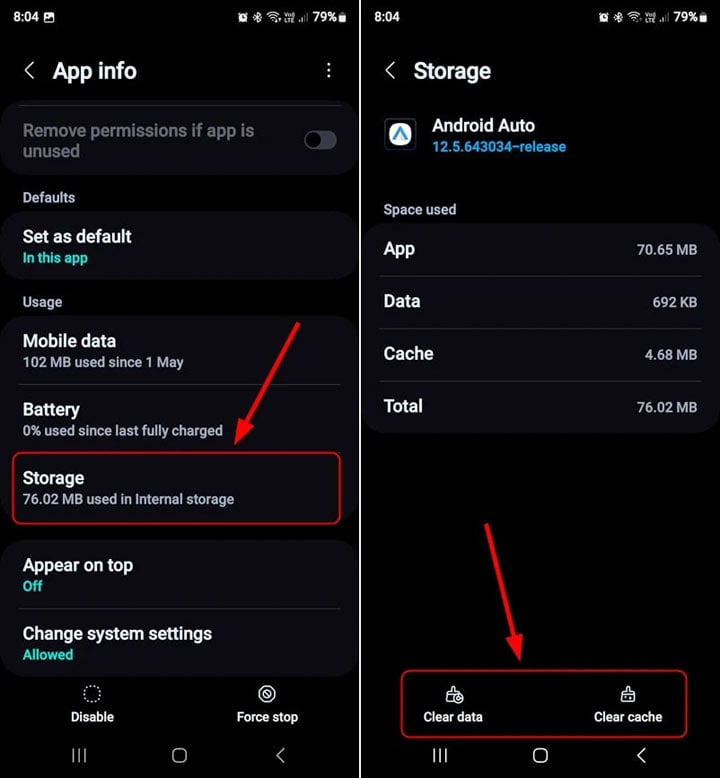
If you’re experiencing lag or latency in Google Maps or a music app, clear the cache and data for those apps as well.
4. Update Android Auto and Google Maps
If the Android Auto app, Google Maps, or music streaming app has pending updates, they may not function properly.
The following steps will also help you fix if Android Auto is not working in your car.
- Open the Google Play Store app and find Android Auto using its search feature.
- Tap the Update option if it’s available. If not, tap the Uninstall button and then update the app.
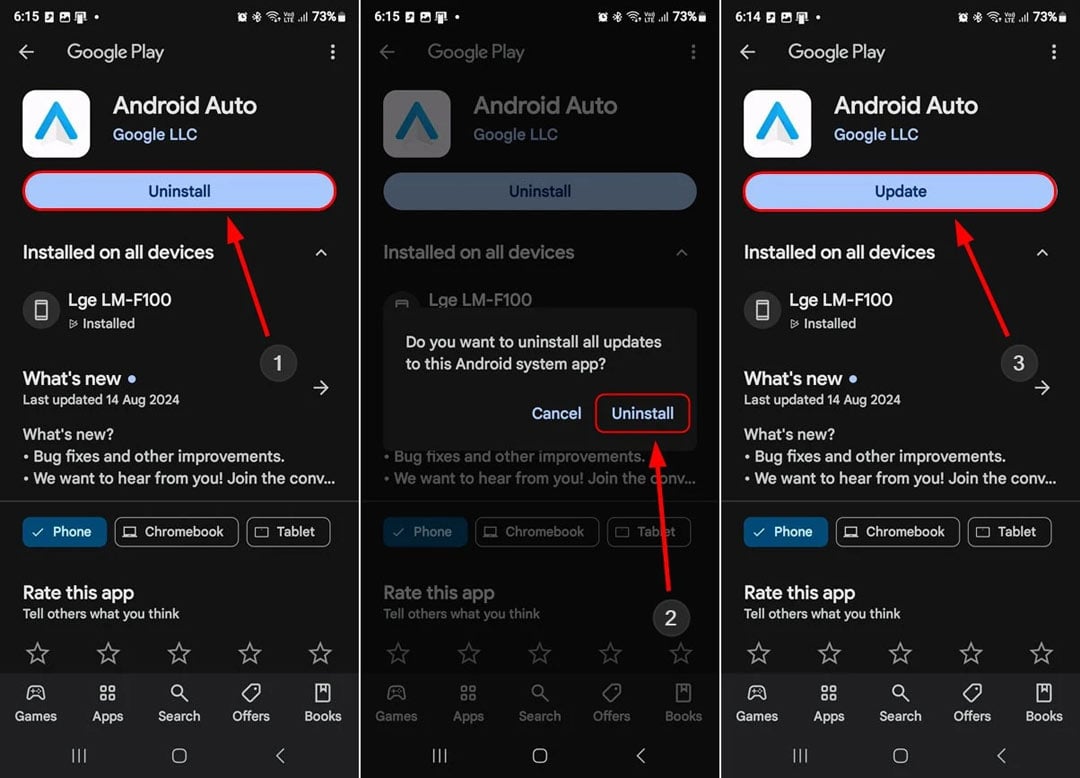
Follow the same steps to update Google Maps or the app that is not working properly.
5. Check Internet Connection
Most people believe that Android Auto transfers data over Bluetooth. The truth is, it uses Bluetooth only for calls. Android Auto uses your phone’s internet connection to work and projects information on your car’s screen. If your mobile data is slow, it’ll affect navigation and audio playback. You must ensure a strong mobile data signal or a reliable Wi-Fi connection for Android Auto to work without latency.
Rebooting the phone and toggling the airplane mode on and off resets your connection and fixes temporary glitches. Android Auto may not work properly if you’re driving in a remote area with poor or no network signal.
6. Use a High-Quality USB Cable
Using a high-quality USB cable can help fix connectivity issues. A cheap or damaged cable can cause connectivity issues. Therefore, use USB cables specifically designed for data transfer, not just charging. Ensure the connectors fit snugly into your device and the car’s port. Loose connections can lead to connectivity issues.
7. Use Offline Maps and Music
Using offline maps can significantly enhance your experience with Android Auto. When you download maps in advance, you’re no longer dependent on a constant internet connection.
To download offline maps, open Google Maps on your phone and tap your profile icon in the search bar. Select Offline Maps from the menu and choose the Select your own map option. Now highlight the map area to download and tap the Download button.
Offline maps reduce data usage during your journeys. You won’t have to worry about exceeding mobile data limits while navigating. Plus, it often leads to quicker loading times since the map information is stored directly on your device.
Similarly, you can download your playlists in apps like Spotify, YouTube Music, Amazon Music, etc., that allow users to download music for offline use.
Switching from a wireless connection to a wired one should also fix the lag and latency issues while using Android Auto. A direct USB connection provides more stable performance than Bluetooth. If you continue to experience lag and latency issues with Android Auto despite trying the previous tips, try factory resetting your phone and resetting your car’s infotainment system.


